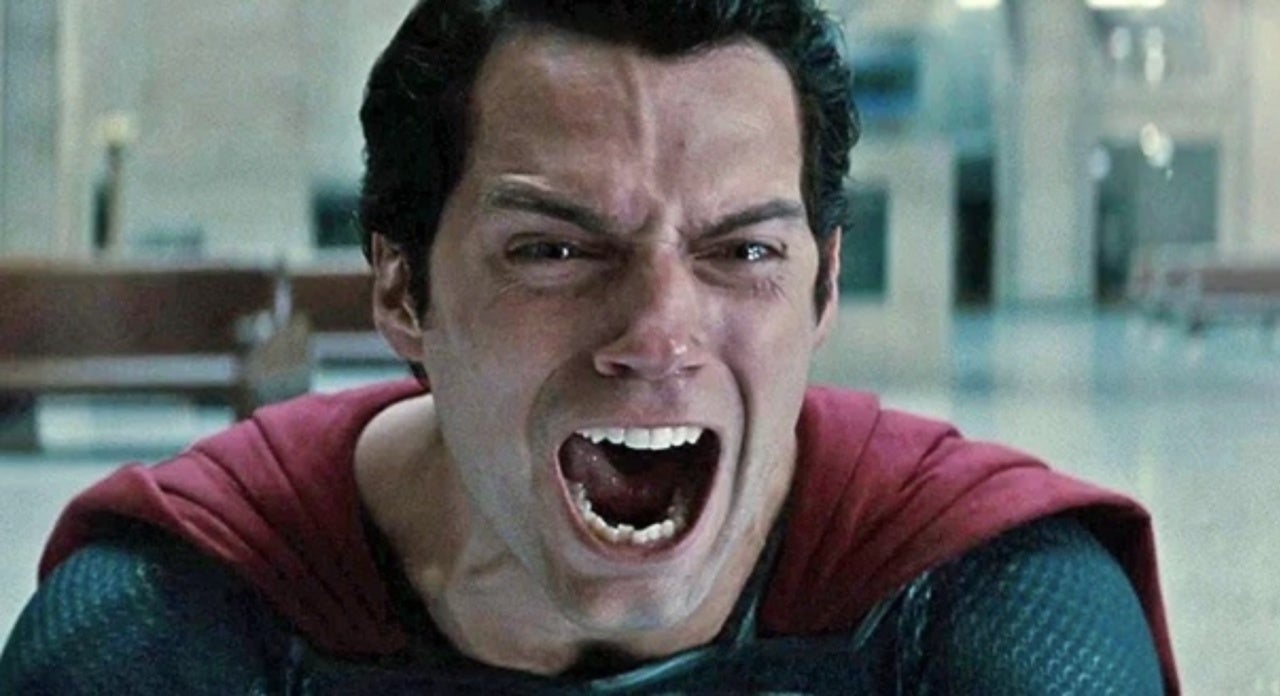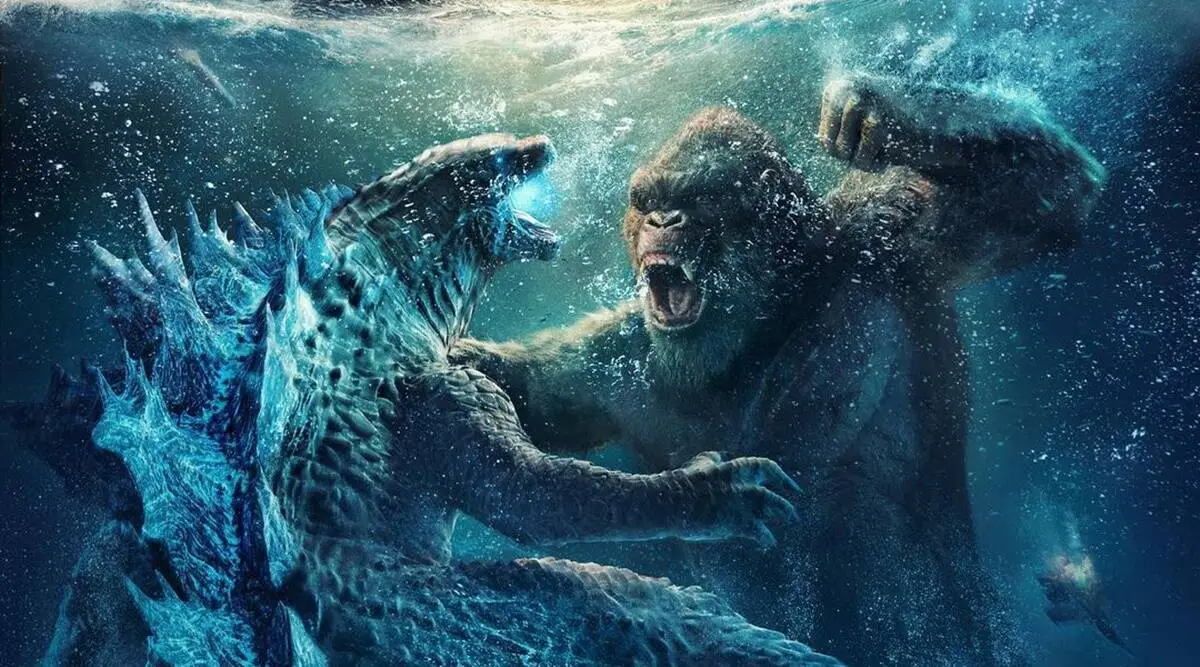The Snyderverse. The MonsterVerse. Aside from adding the suffix “verse” to the end of a word to make a new word, there’s not much you’d think they have in common.
One is dead and gone, while the other is alive and kicking. One is about superheroes, while the other is about giant monsters. One is based on the singular vision of a singular director, and the other is a collection of films and shows from a wide range of directors and writers. One kind of sucks, and the other is far better than it should be. But there is one not-so-surprising similarity between the two films: massive death counts. It’s how these two universes handle massive levels of death and destruction that I want to talk about and why the MonsterVerse is doing what the Snyderverse couldn’t.
Throughout the history of disaster cinema, millions of unseen people have died during the destruction of major cities carefully crafted in CGI (or scale models before that). For the most part, we don’t really give them much thought, as our heroes drive through these crumbling metropolises, rescuing at least one cute dog and a random crying child. However, when 2013’s Many of Steel came out, we all definitely cared. At the end of that film, Superman fights Zod, and their ensuing battle in downtown Metropolis causes an estimated $2 trillion in damage, the death of 129,000 people, and the injury of another million. It blew up the Internet, with a raging debate that tied into people’s dislike of Snyder’s take on Superman in general.
Then, in 2014, Godzilla was released. The film concludes with a prolifically destructive battle in downtown San Francisco that pretty much wipes out the city itself. From then on, the franchise has monsters stomping through multiple cities, including Boston and Hong Kong, racking up deaths and injuries all over the place and what is most likely a much higher total body count than the Snyderverse ever had. Despite this prolific death toll, the MonsterVerse is doing a far better job of addressing the deaths of hundreds of thousands of people in its universe by… actually addressing the deaths. The creators behind the MonsterVerse have actively and somewhat successfully baked both the physical and psychological toll of entire cities being destroyed by superpowered beings into their universe, a feat that the Snyderverse completely failed at.
There Was a Plan?

A lot of why the MonsterVerse is succeeding at actually addressing the death and destruction present in its films is because it went in with at least some sort of plan to do so. The Snyderverse did not. The backlash against Zod and Superman’s battle seemed to completely blindside both the studio and Snyder. After all, the destruction of cities is practically a trope in action cinema, and isn’t a big superpowered battle, knocking over buildings awesome? It was, in part, this almost callous nature to the proceedings that made that battle feel so off, piling onto a litany of issues people had with Superman as a character in Snyder’s film.
While it is likely that Snyder had a plan for the future of the franchise, and it did involve Batman fighting Superman, what became very clear quickly when Batman v. Superman: Dawn of Justice was released in 2016 that the filmmaker developed a lot of that movie in a reactionary way. We can’t know for sure what was planned ahead and what wasn’t, but the film’s entire premise, in fact, its very opening, revolves around the fact that Batman is emotionally scarred by the events that occurred in Man of Steel. In this way, the film seems to be addressing the massive destruction and death that Superman caused. The movie goes to great lengths to move the final battle with Doomsday onto an unpopulated island so as to entirely avoid the question of collateral damage deaths. The very question of Superman’s unchecked power plays a central role in the film itself.

Given all this, it’s pretty astonishing how hard the film fails at nearly every aspect of dealing with the death and destruction caused by Superman. Batman’s hatred of Superman is so poorly set up and ever more poorly resolved (never miss a just to link to Martha) that it feels like it was cooked up in an emergency meeting after the negative reactions to Man of Steel. Superman’s overwhelming power is handled less as a character study and more as a plot point, and almost comedic attempts by the movie to ensure that no innocent bystanders die is disastrous. The latter is especially cumbersome, as it means that instead of approaching the issue with any nuance, Snyder avoids it entirely, lending a falsehood to his attempt to address. If the overwhelming danger and power of Superman (and other heroes) is such a big issue, then deal with it – don’t ignore it.
Ignoring it, however, is what the Snyderverse does from then on out. Wonder Woman takes place in the past, Aquaman barely mentions the rest of the universe, and even Zack Snyder’s Justice League, the director’s cut of the theatrical release, seems to have moved on from the themes of Man of Steel and Batman v. Superman. The final battle of that film is once again set in a mostly abandoned area, thus avoiding the idea of casualties caused by a fight involving heroes altogether once again. As such, the Snyderverse fails to tackle the very concepts it (intentionally or not) set up. Either the destruction wrought by superheroes and massive battles was never baked into the core of Synyderverse, or they abandoned the idea the moment it got controversial. Either way, it’s a stark contrast to how the MonsterVerse is handling the same thing.
How the MonsterVerse Is Succeeding

It has to be said right off the bat that one of the biggest factors that is helping MonsterVerse succeed in tackling the impact of massive death tolls is the fact that it’s had the time to do so. Although the Snyderverse failed miserably for a plethora of reasons, you maybe could argue that it just didn’t get the chance to. Snyder himself only got three films and, as discussed, completely veered away from the subject at the end of the second movie. The MonsterVerse, on the other hand, now has four movies, an animated series, and a live-action show, giving it the space to expand its world into one that actively shows the ramifications of death and destruction on prolific levels. The plethora of content allows the franchise to explore the fallout in ways that the Snyderverse just couldn’t even if it had actually tried.
It also helps that we don’t place moral values on these monsters like we do a character such as Superman. While the MonsterVerse is making King Kong and Godzilla into the “heroes” of the story, it’s also very clear that they’re still big animals who will step on tiny people if they’re in the way of them throwing down with another kaiju. Death and destruction are baked into the very nature of these films, meaning we don’t put moral guardrails onto them in the same way we do for superheroes, who are supposed to represent the best of us. The very metaphorical nature of both Godzilla and King Kong as representations of destructive forces – the atomic bomb and nature fighting back, respectively – makes their murderous rampages something more than just a spectacle from the get-go, meaning the MonsterVerse already has a baseline for accepting mass casualties.

That, however, makes what the MonsterVerse is doing by actually addressing the fallout of these battles all the more impressive. Through four films and two shows of varying quality, the MonsterVerse has baked the idea of destruction and death into its very core. The premise is set early as Godzilla: King of Monsters, the franchise’s first non-prequel sequel, dives headlong into a story that’s based around the destruction and death of humanity being a good thing as the kaiju leave a trail of bodies but also one of rebirth. Motivations for characters come from the deaths of loved ones and Monarch’s desperate efforts to control these giant creatures somehow. Even Kong: Skull Island, which takes place before Godzilla’s rampage, is set up as a metaphor for war and focuses on an almost Shakespearean revenge battle between Kong and Samuel L. Jackson’s Preston Packard. Godzilla vs. Kong even features scenes of emergency responses to kaiju attacks.
The very core of the films is built around destruction, and it means the MonsterVerse can tackle the issue far better than the Snyderverse ever did. This is most prevalent in Monarch: Legacy of Monsters, as the title might suggest. Set directly after Godzilla’s initial attack, the series opens by ushering into a world horrified of another giant monster battle possibly occurring. It dives into the PTSD suffered by those on the ground in San Francisco and spends time unpacking just how the world would function after such an event. The series gives destruction time to breathe after the fact but doesn’t ignore it like the Snyderverse began to. Again, time allows for this, but credit must be given to a franchise that seems to be just a bit smarter than its giant monster roots may hint at. The MonsterVerse has embraced its death toll, using its monsters as the metaphors they’ve always been and elevating it past the destruction porn that Man of Steel‘s ending felt like.
The Failings of the MonsterVerse

Sadly, it doesn’t appear that the MonsterVerse is fully committing to truly creating a universe where the impact of colossal disasters is felt. These are, after all, massive blockbusters about giant monsters, and Legendary, the studio behind the franchise, seems to be careening toward making the films nothing but that. Godzilla v. Kong provides little hope that the future of the films will be anything but big, destructive action with little reflection. That film, despite the aforementioned nod, is basically all spectacle and little reflection. This direction is even clearer after seeing the trailer for Godzilla x Kong: The New Order. Despite weaving a more complex relationship with disaster porn into the early years of the MonsterVerse, it isn’t clear that the franchise will be continuing in that direction.
Even Monarch, which has the time and space of a multi-episode TV show to really unpack the world’s trauma, loses the thread as it barrels into action and disaster movie cliches. What starts off as a series taking its time to introduce a world truly impacted by horrible disasters devolves into some of the most basic disaster movie tropes by the end. As the series progresses, it almost feels like it’s doing exactly what the Snyderverse did and intentionally ignoring or shifting the story away from confronting these subjects. Losing sight of this bigger picture could mean that the MonsterVerse eventually falls into the same trap as the SnyderVerse did, eventually ignoring the impact or, even worse, glorifying it.
That may be what the studio thinks is best, but that would be going against what has made the franchise work all these years. It is even more glaringly the wrong move, if it is indeed the move they are making because it’s just been proven wrong by Godzilla himself. Godzilla Minus One‘s breathtaking success at the theaters shows that people don’t just want to watch destruction for destruction’s sake. They want it to mean something. More of a character study than a monster movie, Godzilla Minus One is a perfect example of how confronting death and trauma in these films makes them better. Hopefully, Legendary remembers that and continues forward with what they’ve done in the past.






Published: Dec 25, 2023 02:31 pm